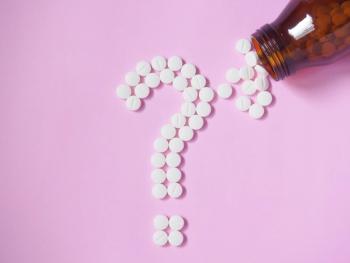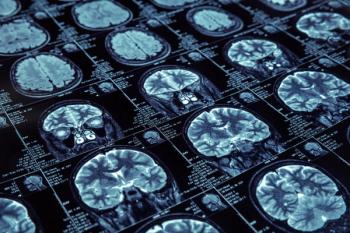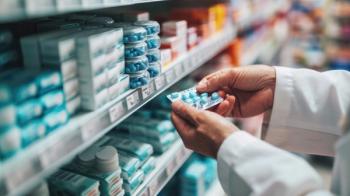
- October 2012 Diabetes
- Volume 79
- Issue 10
Hypoglycemia: Fast Action Yields Best Outcomes
Patients with diabetes should be prepared to handle hypoglycemia at all times.
Patients with diabetes should be prepared to handle hypoglycemia at all times.
Even the most compliant diabetes patient is likely to experience hypoglycemia, or low blood sugar, from time to time. Recognizing the signs and symptoms of hypoglycemia and the factors that can contribute to it are key components of diabetic care.
Given the proper education, patients with diabetes can better manage their condition and decrease the incidence of hypoglycemic episodes.
Factors that may contribute to hypoglycemia include insufficient caloric intake due to skipping or delaying meals, consumption of too few carbohydrates, inaccurate insulin dosing (ie, excessive doses, irregular timing of doses, or frequent adjustments of dosing), concomitant use of hypoglycemic drugs, drug interactions, excessive intake of alcohol, very tight glycemic control, and increased physical activity.1-7
Hypoglycemia Defined
The American Diabetes Association (ADA) defines hypoglycemia as a blood glucose level of 70 mg/dL or lower, although some patients may experience hypoglycemia symptoms at higher glucose levels as well.1,2 The early warning signs of hypoglycemia may be classified as autonomic (shaking, sweating, trembling, tachycardia, palpitations) or neuroglycopenic (dizziness, lack of coordination, difficulty concentrating).1 The Table defines the stages of hypoglycemia and their symptoms.
Some patients may also experience hypoglycemia unawareness, a serious condition in which the condition occurs without symptoms, potentially leading to loss of consciousness.1-3 Some studies suggest that hypoglycemia unawareness is more likely to occur in patients who have neuropathy, those on tight glucose control, and those taking certain cardiovascular or antihypertensive medicines.4 Some patients may also experience episodes of hypoglycemia while asleep and may wake up feeling tired or confused.2,4
Treatment
The mainstay treatment for mild to moderate episodes of hypoglycemia is glucose.1 There are various nonprescription products available for treating mild to moderate cases of hypoglycemia in the form of glucose tablets, gels, and drinks. These products are specifically designed to treat hypoglycemia and are rapidly absorbed by the body to increase glucose levels.8
If these glucose sources are not available, fast-acting carbohydrates can be used instead, such as 8 oz of low-fat or nonfat milk, 4 oz of fruit juice or nondiet soda, 1 tablespoon of sugar, hard candies, or 5 to 6 jelly beans.1,5 It is important to inform patients that foods high in fat, such as chocolate and potato chips, are not ideal choices for treating hypoglycemia because their fat content delays the absorption of carbohydrates.1,3
The ADA recommends that patients with diabetes always carry a source of fast-acting carbohydrates in case they experience hypoglycemia.1,8 It further recommends that hypoglycemic patients use glucose products instead of other foods if possible, because they rapidly deliver the recommended 15 to 20 g of carbohydrates and may also prevent patients from consuming more calories than needed to get glucose levels within the normal range.8
At the onset of symptoms, patients should be instructed to immediately test their blood glucose levels if possible. If the result is low, many experts recommend using the “Rule of 15,” which advises eating or drinking something that has 15 g of a fast-acting carbohydrate.1,4,5,8 If the patient’s symptoms persist or their blood glucose levels remain below 70 mg/dL after 15 minutes, patients should consume an additional 15 g of carbohydrates, then wait another 15 minutes and test again.1,5,8 If levels remain low, patients should be advised to seek immediate medical attention.1,5,8
Beyond OTC: Severe Hypoglycemia
Once the episode of hypoglycemia has been resolved, if meal time is not within 1 hour, patients should eat a small snack containing a carbohydrate and a protein to prevent another episode of hypoglycemia and should monitor their blood glucose levels.1 Cases of severe hypoglycemia can result in unconsciousness, coma, seizure, or an inability to swallow, and should be treated immediately with a glucagon injection.1 Patients who use insulin, especially those with type 1 diabetes, should always carry a glucagon emergency kit, which is available by prescription only.1
Glucagon typically exerts its therapeutic effect within 5 to 10 minutes. If there is no response after 5 to 10 minutes, a second dose may be administered.1 If the patient is still unresponsive at this point, 911 should be called immediately for further treatment.1 Once a patient is conscious and can swallow, the patient should have a carbohydrate liquid and a carbohydrate snack and be monitored for at least 24 hours.1 Patients should always follow up with their primary health care providers after any severe case of hypoglycemia.
It is imperative that patients and caregivers be thoroughly educated on the proper use of the glucagon kit in order to be prepared during an emergency. Patients should be advised to routinely check the expiration dates on their glucagon kits and replace them if necessary. Patients, family members, and other caregivers should be instructed on the recommended protocol for handling a severe hypoglycemic episode.1
Conclusion
It is essential that patients understand the importance of recognizing and immediately treating any symptoms of hypoglycemia, as severe hypoglycemia may result in unconsciousness, coma, and seizures. Patients who experience frequent or severe episodes of hypoglycemia should be encouraged to discuss means of preventing or decreasing these episodes with their primary health care provider.6,7
Ms. Terrie is a clinical pharmacy writer based in Haymarket, Virginia.
References
1. Ulbrich T, Krinsky D. Self care components of selected chronic disorders. In: Krinsky D, Berardi R, Ferreri S, et al, eds. Handbook of Nonprescription Drugs. 17th ed. Washington, DC: American Pharmacists Association; 2012.
2. What is hypoglycemia? CanAm Learning Center website. http://dex4.com/hypowellness/default.aspx. Accessed September 5, 2012.
3. Causes and signs of hypoglycemia. Glucoburst product website. www.glucoburst.com/hypoglycemia-causes-signs.aspx. Accessed September 4, 2012.
4. Hypoglycemia. American Diabetes Association website. www.diabetes.org/living-with-diabetes/treatment-and-care/blood-glucose-control/hypoglycemia-low-blood.html. Accessed September 3, 2012.
5. Hypoglycemia. American Diabetes Association Planet D website. www.diabetes.org/living-with-diabetes/parents-and-kids/planet-d/new-to-diabetes/hypoglycemia.html. Accessed September 5, 2012.
6. Hypoglycemia. National Diabetes Information Clearinghouse website. http://diabetes.niddk.nih.gov/dm/pubs/hypoglycemia/. Accessed September 6, 2012.
7. Low blood sugar do’s and don’ts. CanAM Learning Center website. http://dex4.com/learningcenter/hypoglycemia-dos-donts.aspx. Accessed September 6, 2012.
8. Gebel E. Products for treating lows. American Diabetes Association 2012 Consumer Guide. American Diabetes Association website. http://forecast.diabetes.org/magazine/features/2012-products-treating-lows. Accessed September 6, 2012.
Articles in this issue
about 13 years ago
Can You Read These Rxs?about 13 years ago
Case Studiesabout 13 years ago
Creating a Service-Focused Practiceabout 13 years ago
Pet Peevesabout 13 years ago
Weight Loss Interventions: Behavioral Versus Stepped Careabout 13 years ago
Effects of Dietary Composition on Energy Expenditure After Weight Lossabout 13 years ago
Telephonic CBT Versus Face-to-Face CBT for Depressionabout 13 years ago
Medication Costs Pose Challenge for Many AmericansNewsletter
Stay informed on drug updates, treatment guidelines, and pharmacy practice trends—subscribe to Pharmacy Times for weekly clinical insights.

















































































































































































































